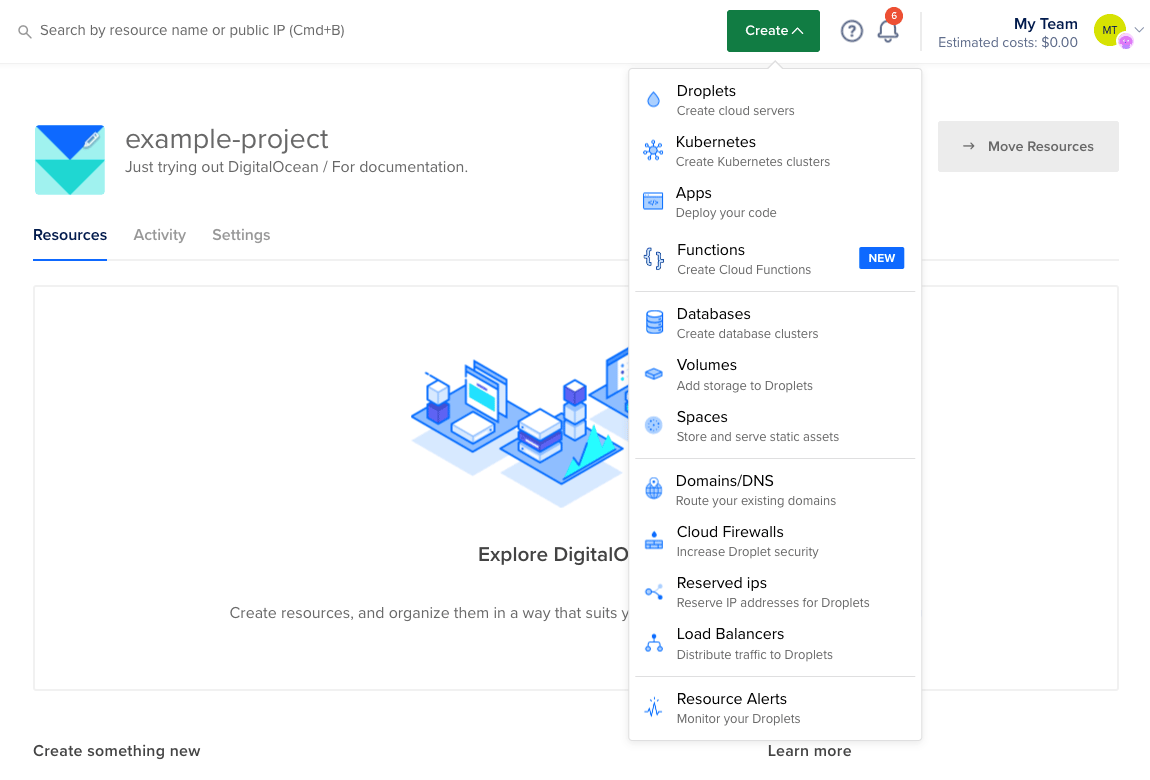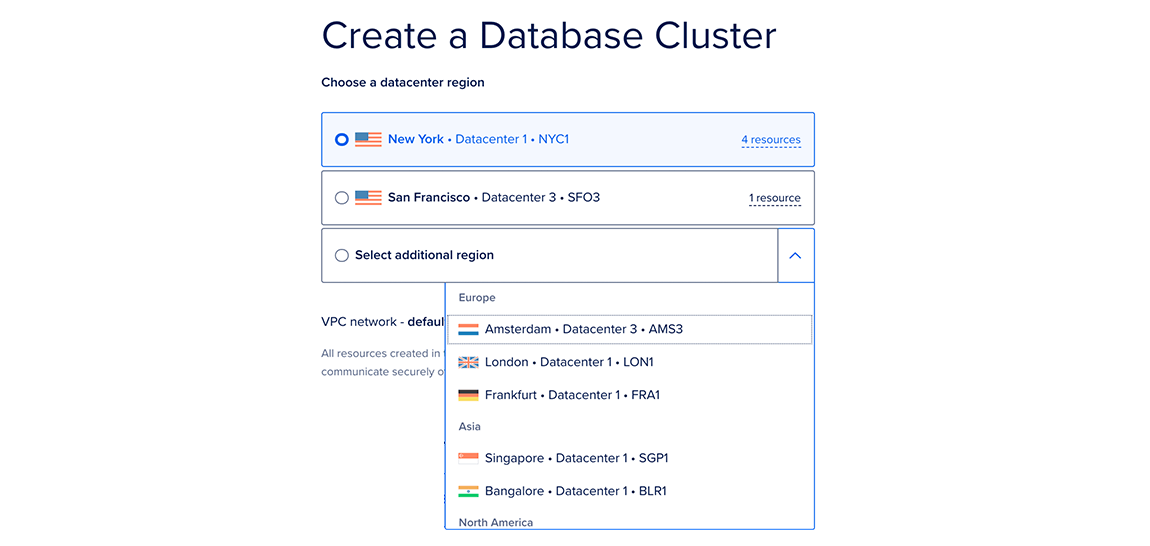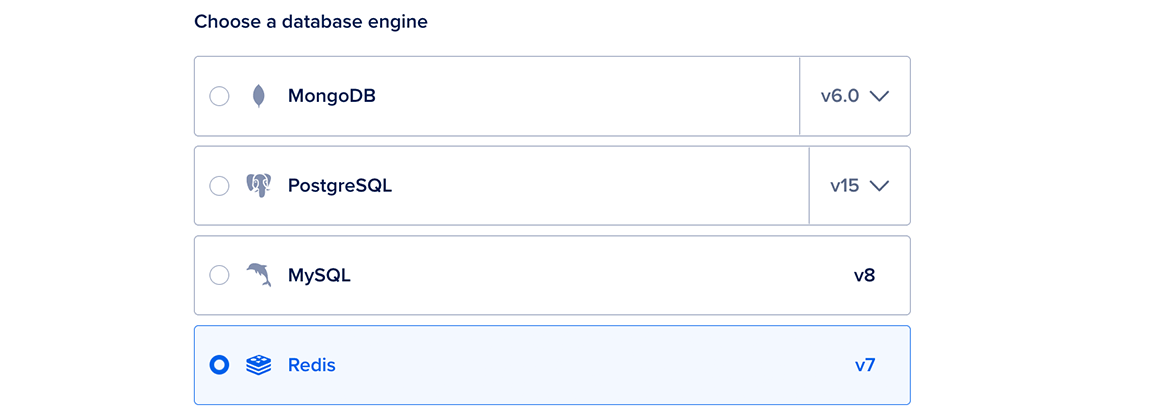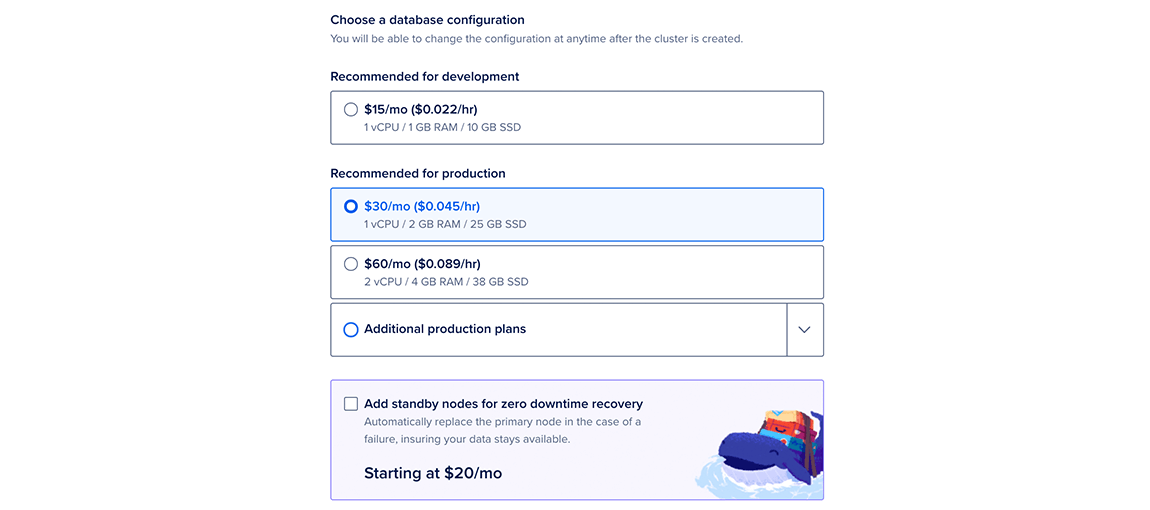How to Create Redis Database Clusters
Redis is an open source, key-value database built with an in-memory design that emphasizes speed. It has support for rich data types, atomic operations, and Lua scripting.
Create a Database Cluster Using the CLI
doctl, you need to provide values for the --engine, --region, and --size flags. Use the doctl databases options engines, doctl databases options regions, and doctl databases options slugs commands, respectively, to get a list of available values.Create a Database Cluster Using the API
engine, region, and size fields, which specify the database’s engine, its datacenter, and its configuration (number of CPUs, amount of RAM, and hard disk space). Use the /v2/databases/options endpoint to get a list of available values.Create a Database Cluster Using the Control Panel
You can create a Redis database cluster at any time from the Create menu by selecting Databases. This takes you to the Create a Database page.

In the create menu, click Databases to open the database cluster creation page. This is where you choose your database cluster’s configuration, like the number and size of nodes and the datacenter region.
Choose a datacenter
In the Choose a datacenter section, select the datacenter for your database cluster.

This page lists the datacenters in which you currently have the most resources. The number of resources you have in each datacenter is listed to the right as X resources. Hover over this text to see the specific resources you have in that datacenter.
For the best performance, create your database in the same datacenter as your other DigitalOcean resources. After creation, you can relocate your cluster to another datacenter.
Choose a database engine
In the Choose a database engine section, choose Redis.

We currently support Redis 7. You cannot change the Redis version after creating a cluster.
Choose a cluster configuration
In the Choose a cluster configuration section, select the machine type and the number and size of the database nodes. Each option lists its combined monthly cost, equivalent hourly cost, and node specifications. For more options, click Additional product plans.

If you select any node plan besides the smallest (1 vCPU / 1 GiB RAM / 10 GiB SSD), you can also add up to one standby node to your cluster. Standby nodes ensure that your data stays available by giving your cluster high availability and failover.
Redis has memory overhead requirements, so the amount of available, usable memory in Redis nodes is less than their total amount of memory. For a chart of usable memory per plan, see Redis memory usage.
You can increase the number or size of database nodes at any time. However, because of data integrity risks, you cannot downsize nodes.
On Redis, each CPU in your cluster can handle up to 200 new connections per second. Any additional connection attempts within the second will fail and users must try again.
To work around this limitation, we recommend using connection pooling, which caches database connections and improves performance. DigitalOcean Redis clusters do not support connection pooling natively; however, most clients used to connect to Redis do. Alternatively, you can resize your database clusters to add more CPUs.
Finalize and Create
In the last section, Finalize and Create, choose the name for the cluster, the project to add it to, and any tags you want to use.

There are three sub-headers in this section:
-
Choose a name: You can leave the automatically-generated name for the database or choose a custom name. Names must be unique, be between 3 and 63 characters long, and only contain alphanumeric characters, dashes, and periods.
-
Select a project: You can leave the default project or choose another one.
-
Tags: You can add a tag by typing it into the text box and pressing enter. Tags can only contain letters, numbers, colons, dashes, and underscores.
After creation, you can always edit the database’s tags or move it to another project; however, its name cannot be changed.
When you’re ready, click the Create a Database Cluster button.
Clusters typically take five minutes or more to provision, but you can complete important configuration tasks such as restricting inbound connections while you wait.